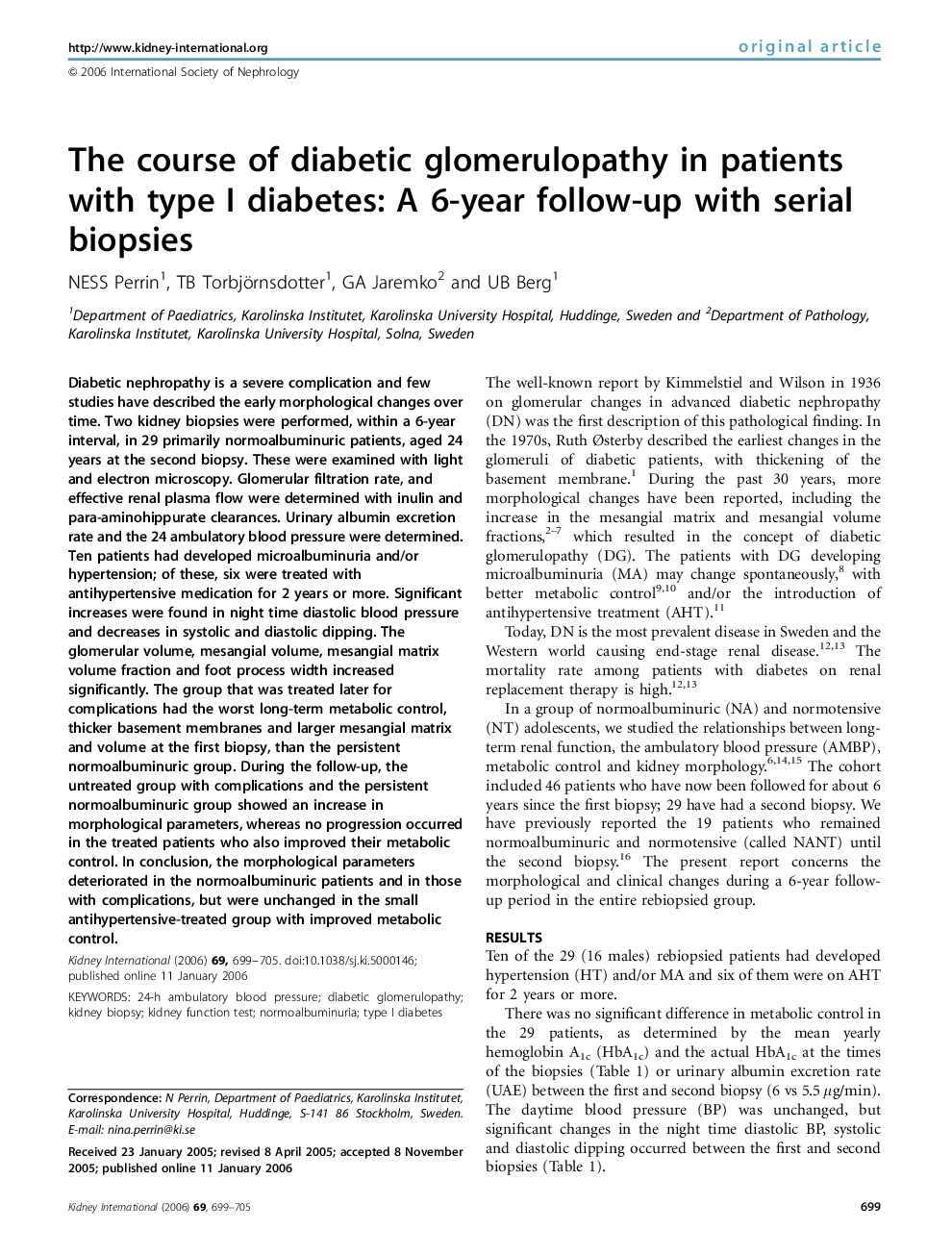| Article ID | Journal | Published Year | Pages | File Type |
|---|---|---|---|---|
| 3885503 | Kidney International | 2006 | 7 Pages |
Diabetic nephropathy is a severe complication and few studies have described the early morphological changes over time. Two kidney biopsies were performed, within a 6-year interval, in 29 primarily normoalbuminuric patients, aged 24 years at the second biopsy. These were examined with light and electron microscopy. Glomerular filtration rate, and effective renal plasma flow were determined with inulin and para-aminohippurate clearances. Urinary albumin excretion rate and the 24 ambulatory blood pressure were determined. Ten patients had developed microalbuminuria and/or hypertension; of these, six were treated with antihypertensive medication for 2 years or more. Significant increases were found in night time diastolic blood pressure and decreases in systolic and diastolic dipping. The glomerular volume, mesangial volume, mesangial matrix volume fraction and foot process width increased significantly. The group that was treated later for complications had the worst long-term metabolic control, thicker basement membranes and larger mesangial matrix and volume at the first biopsy, than the persistent normoalbuminuric group. During the follow-up, the untreated group with complications and the persistent normoalbuminuric group showed an increase in morphological parameters, whereas no progression occurred in the treated patients who also improved their metabolic control. In conclusion, the morphological parameters deteriorated in the normoalbuminuric patients and in those with complications, but were unchanged in the small antihypertensive-treated group with improved metabolic control.
